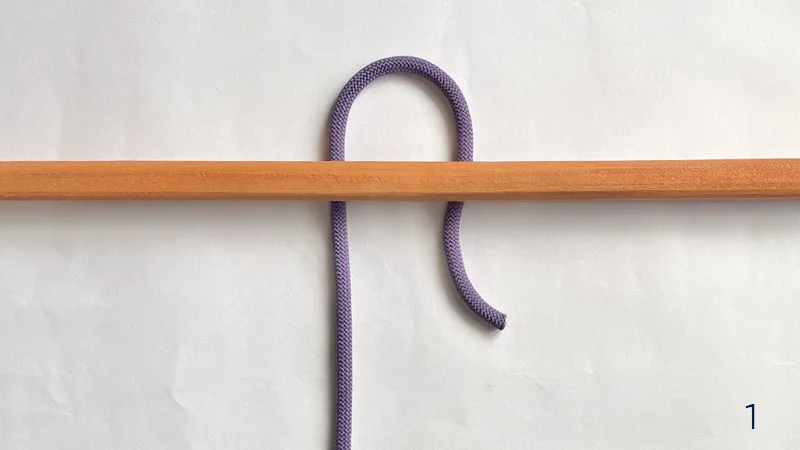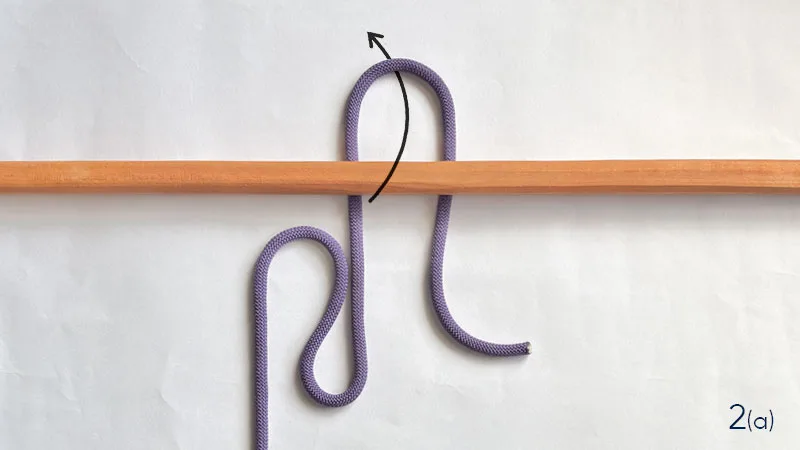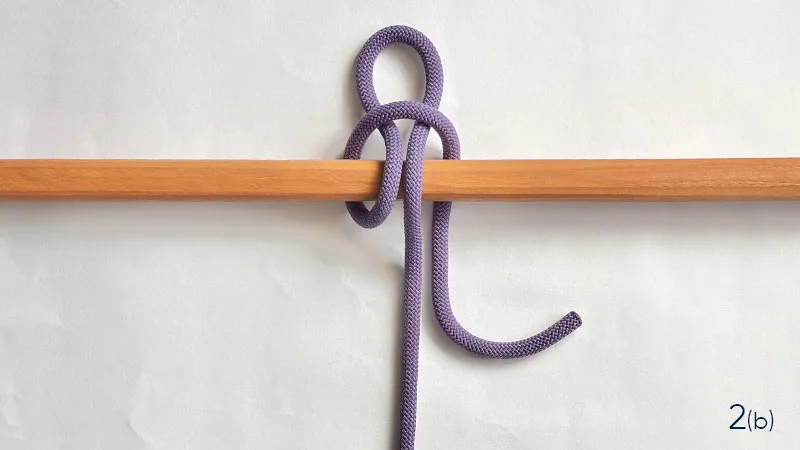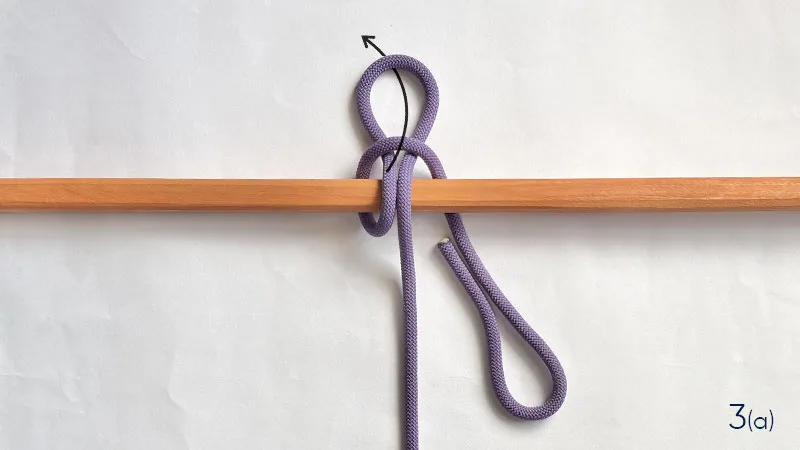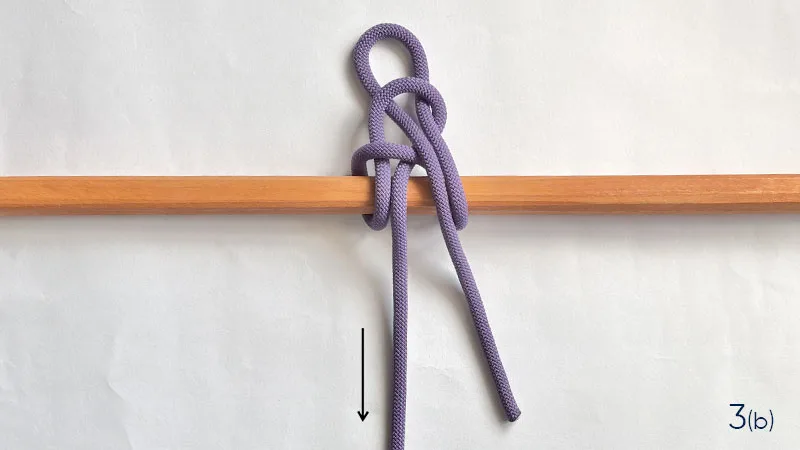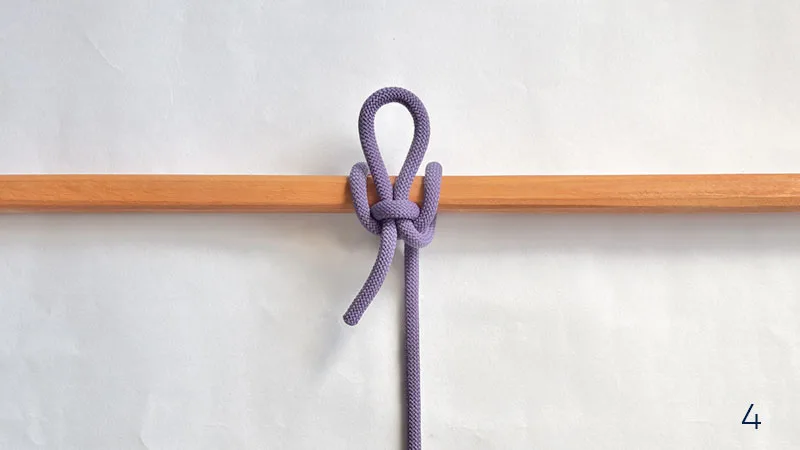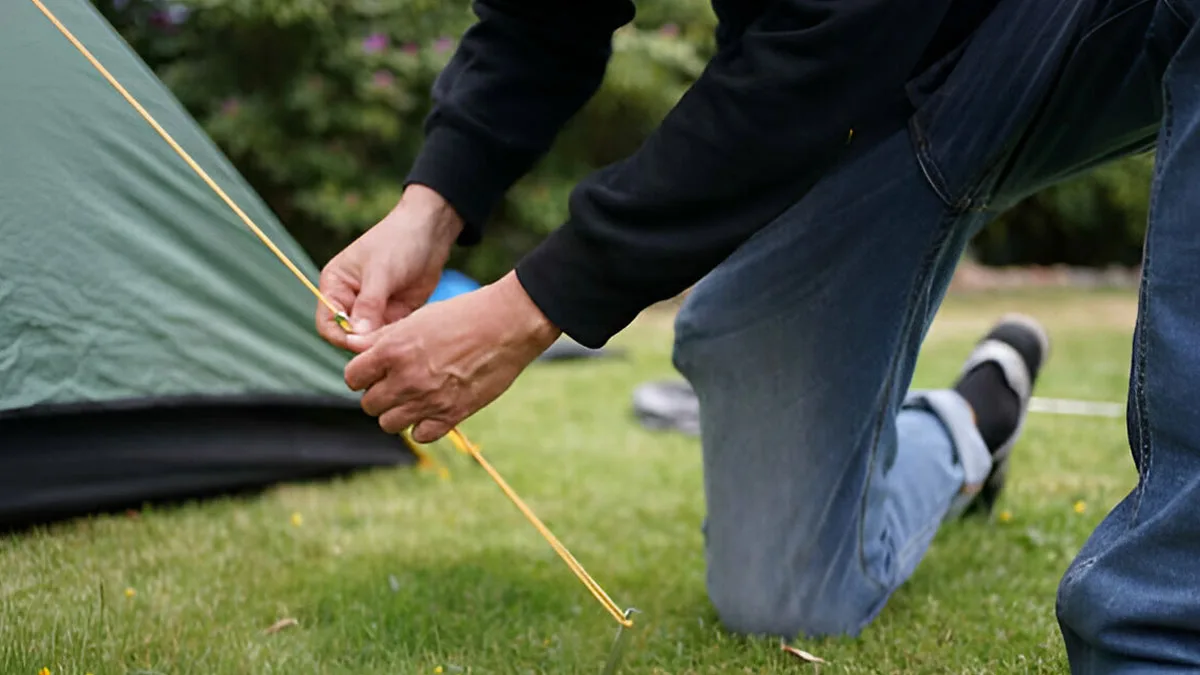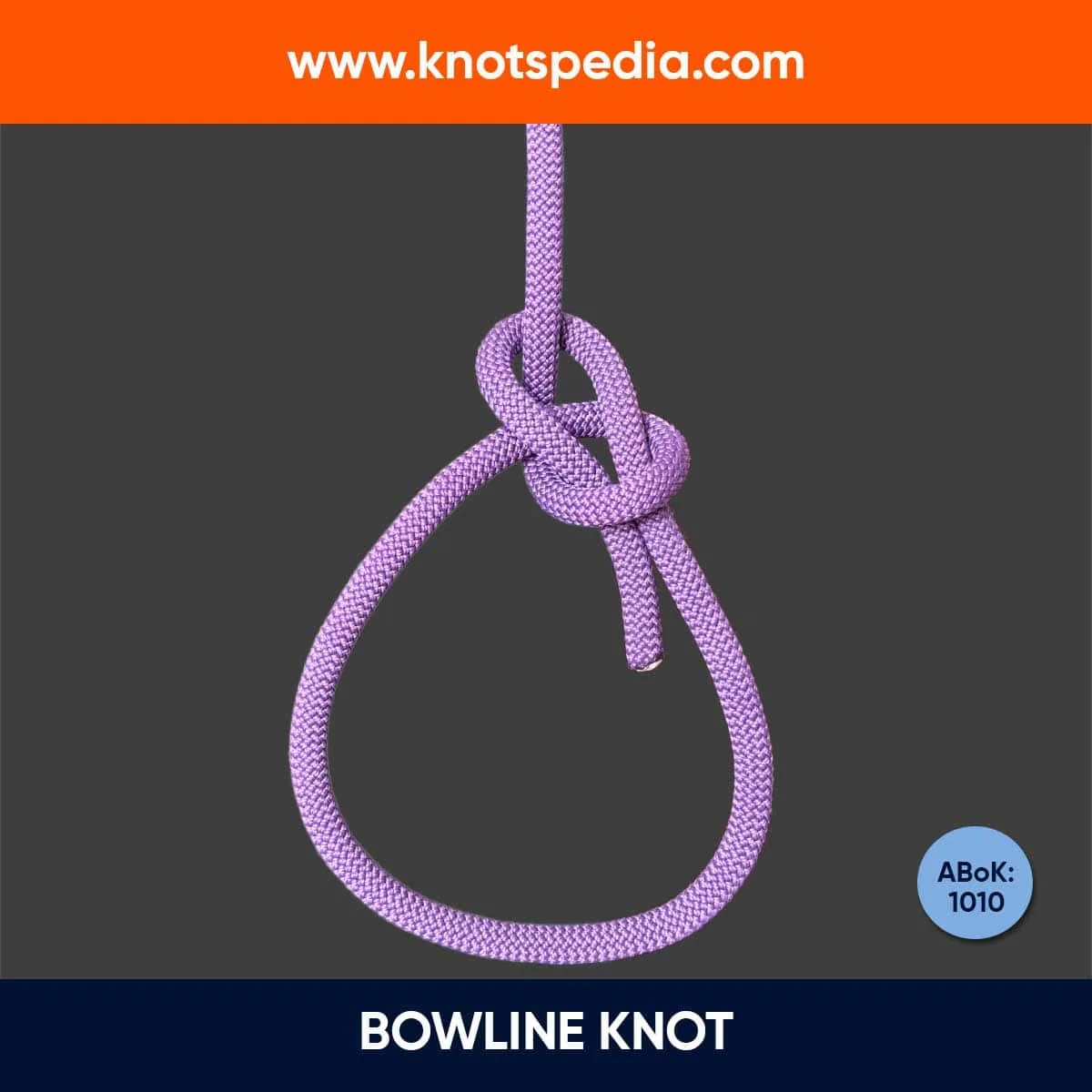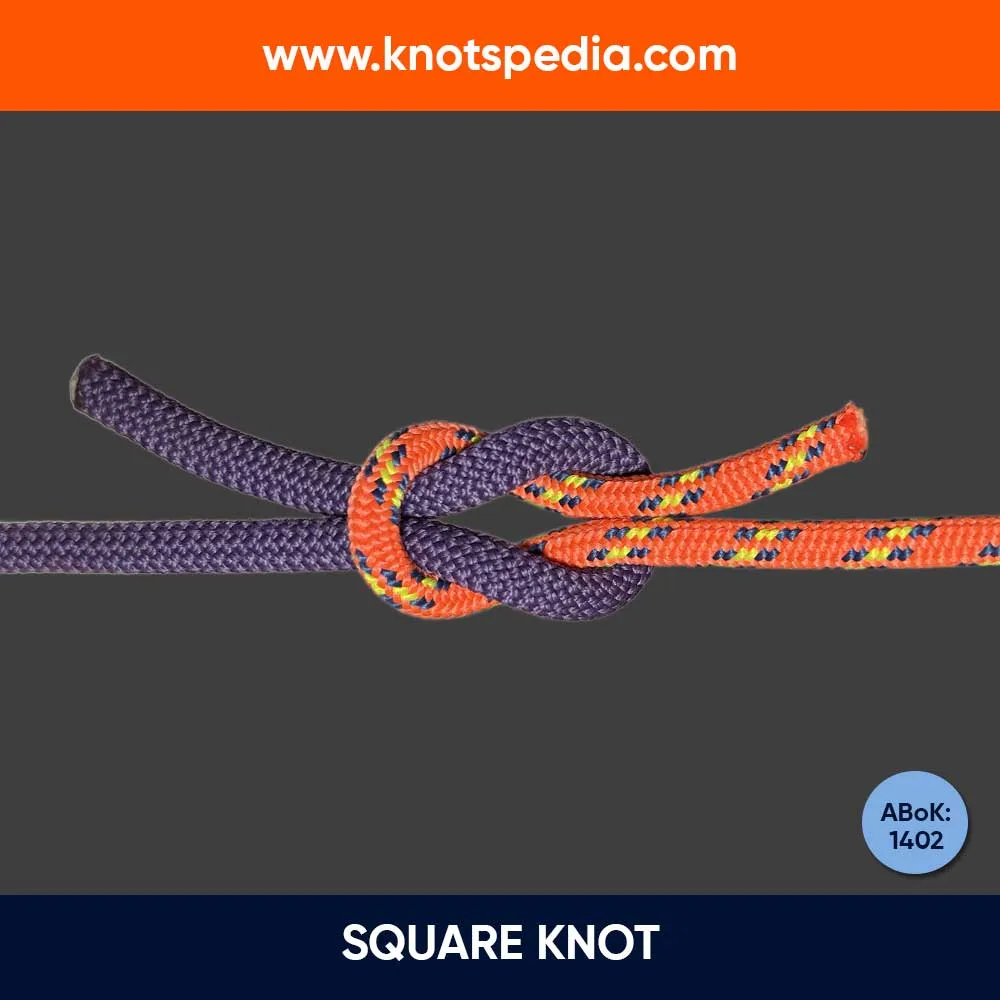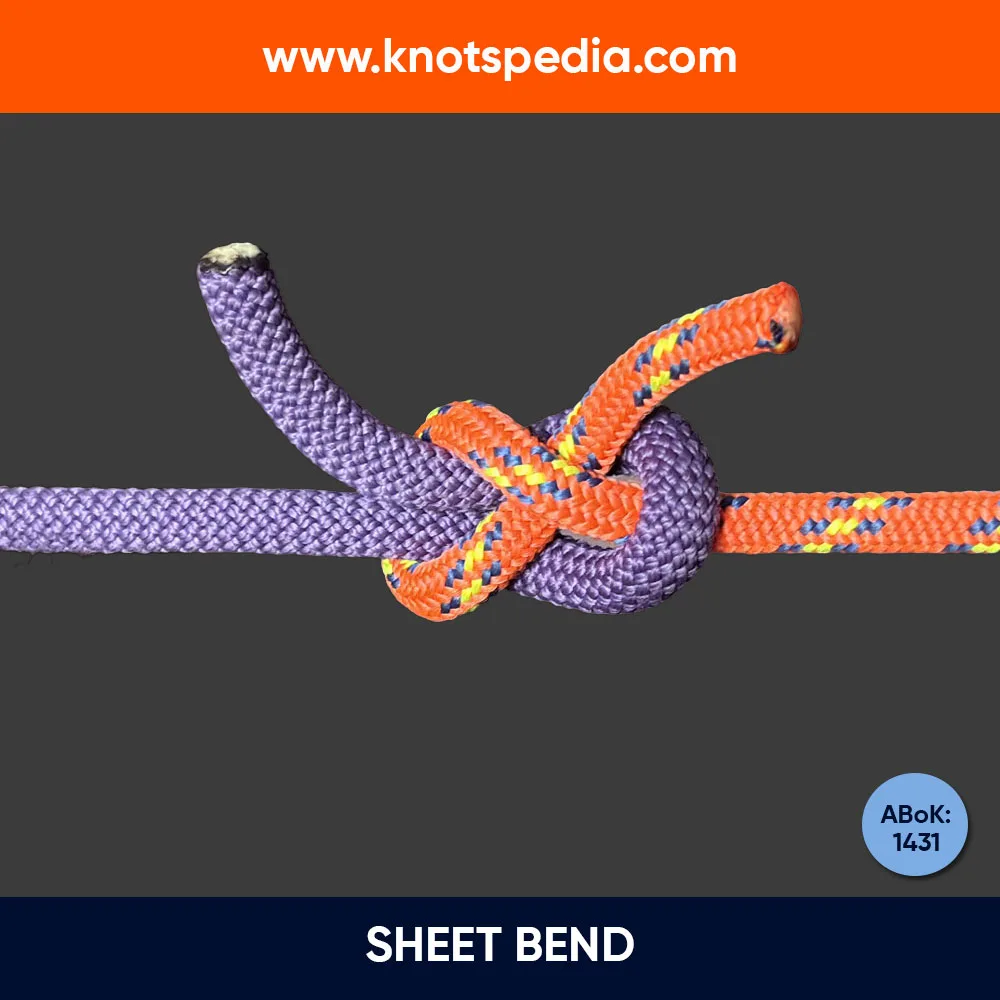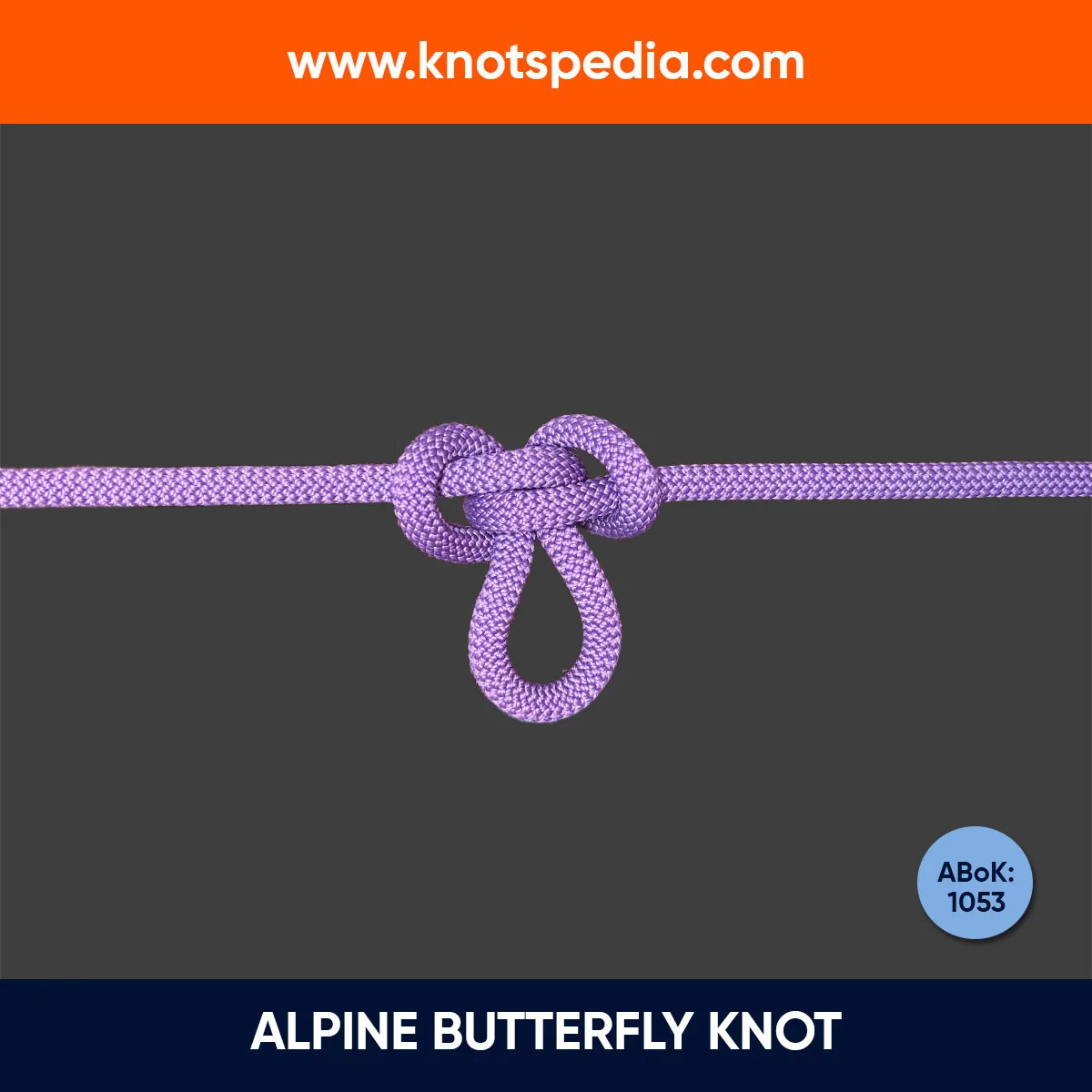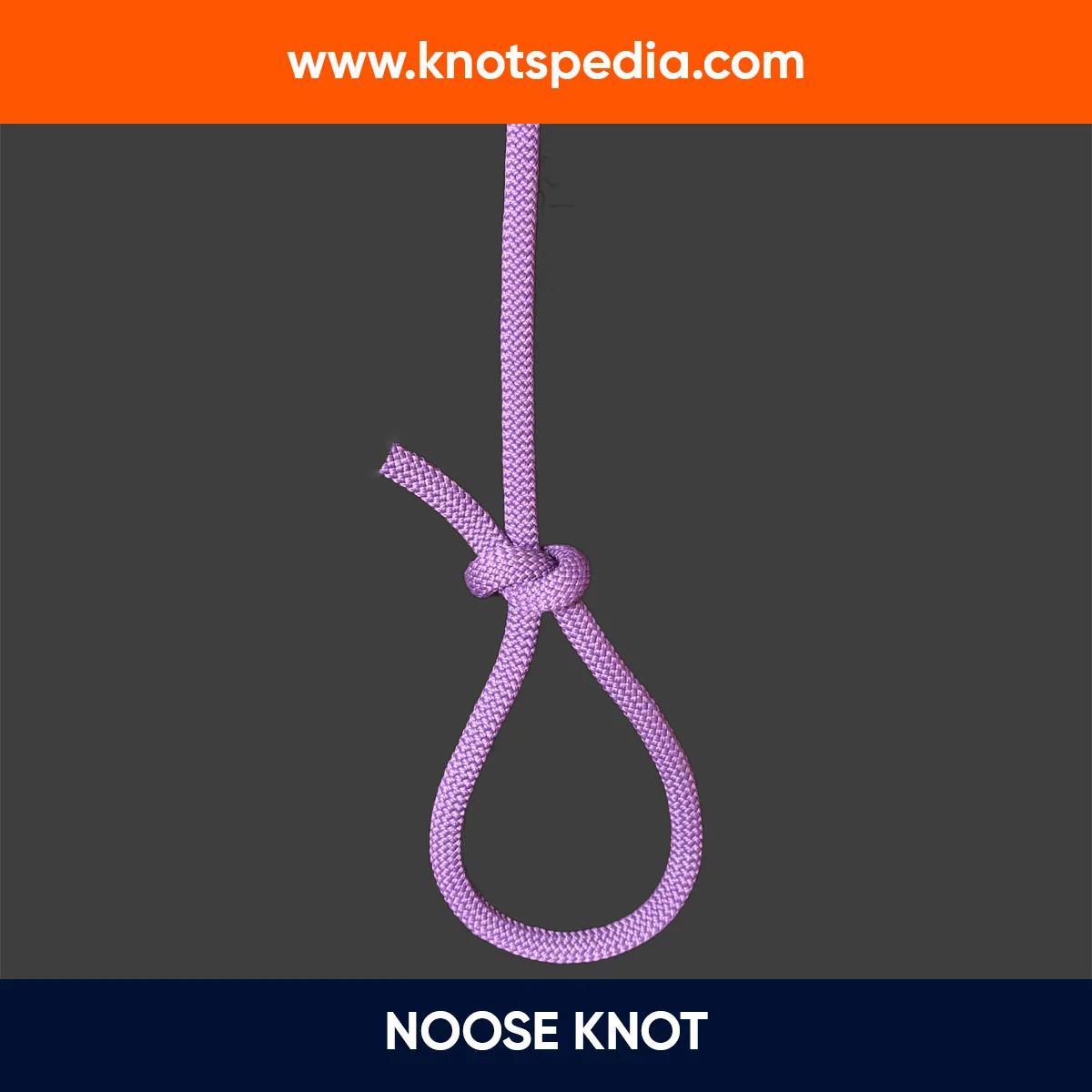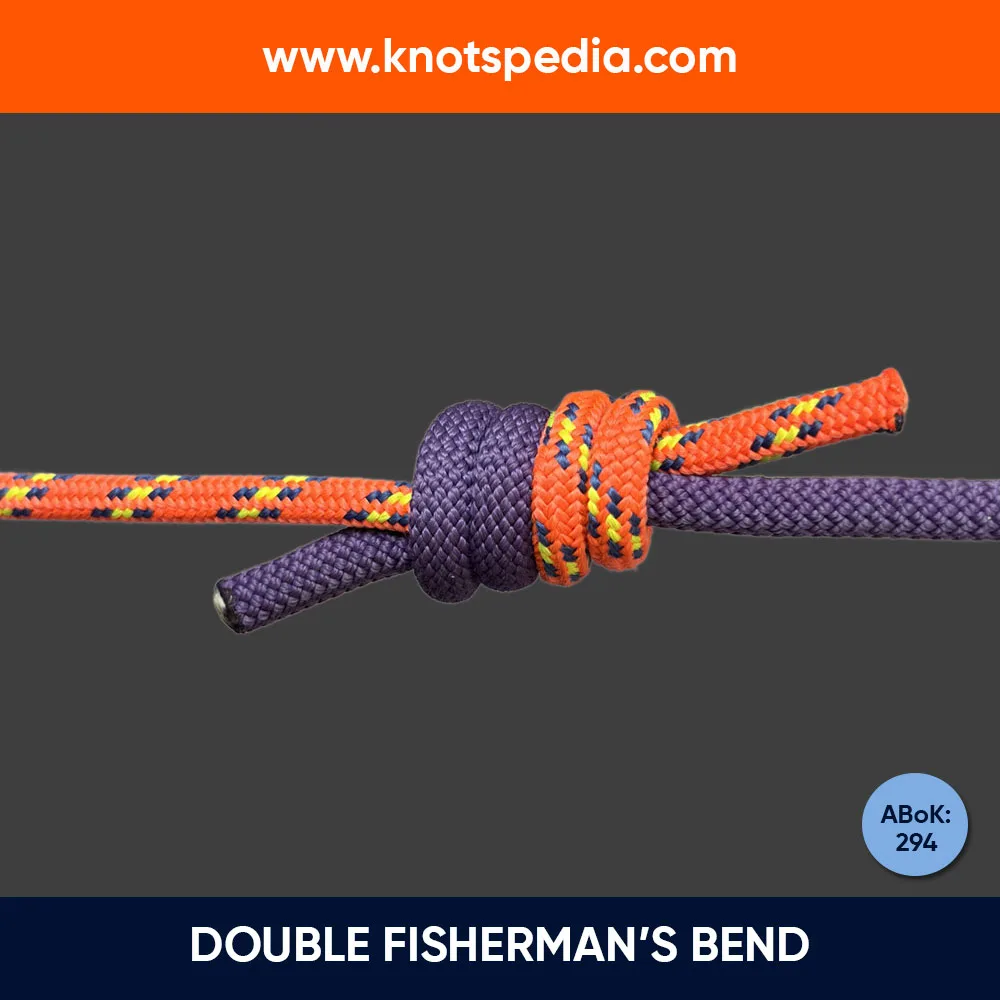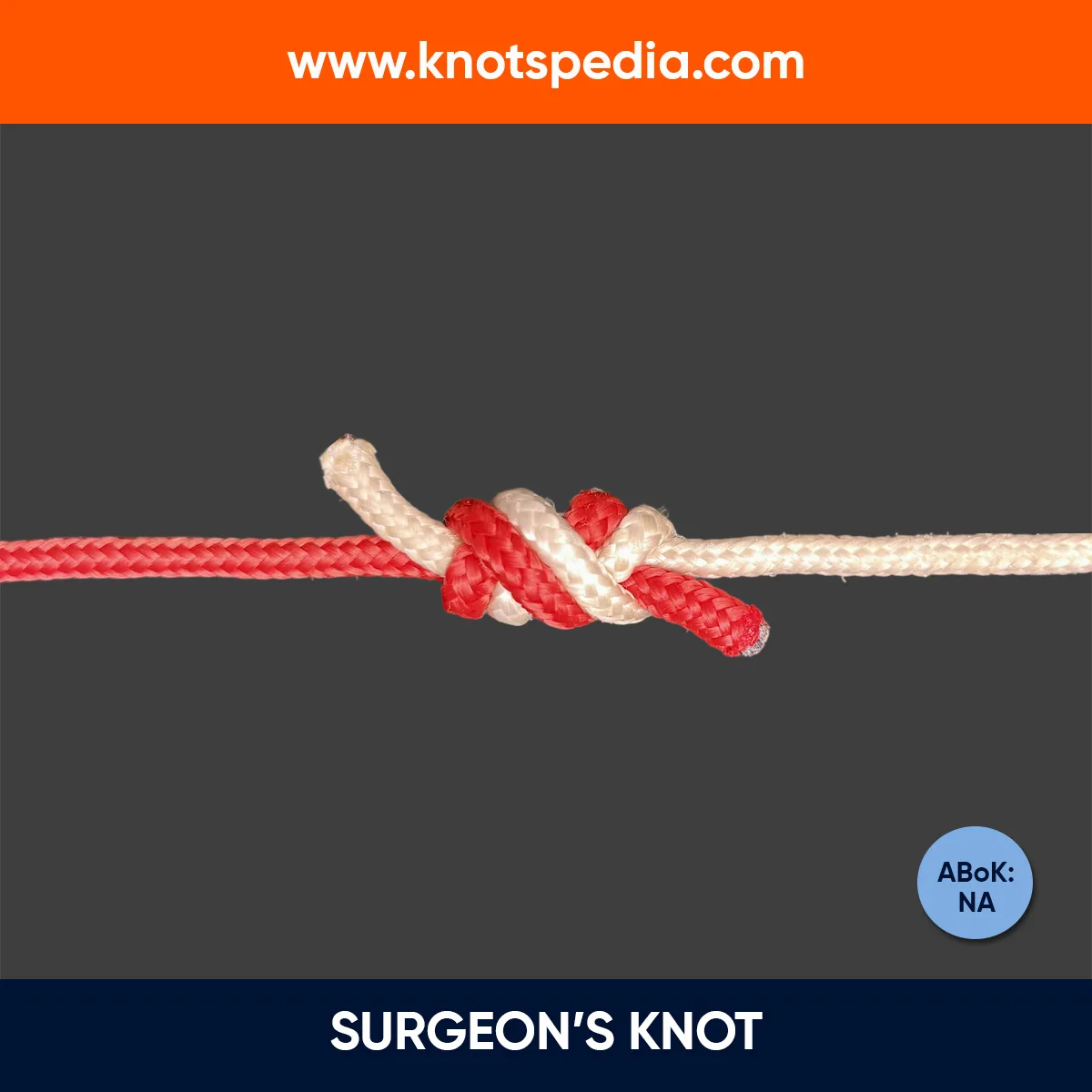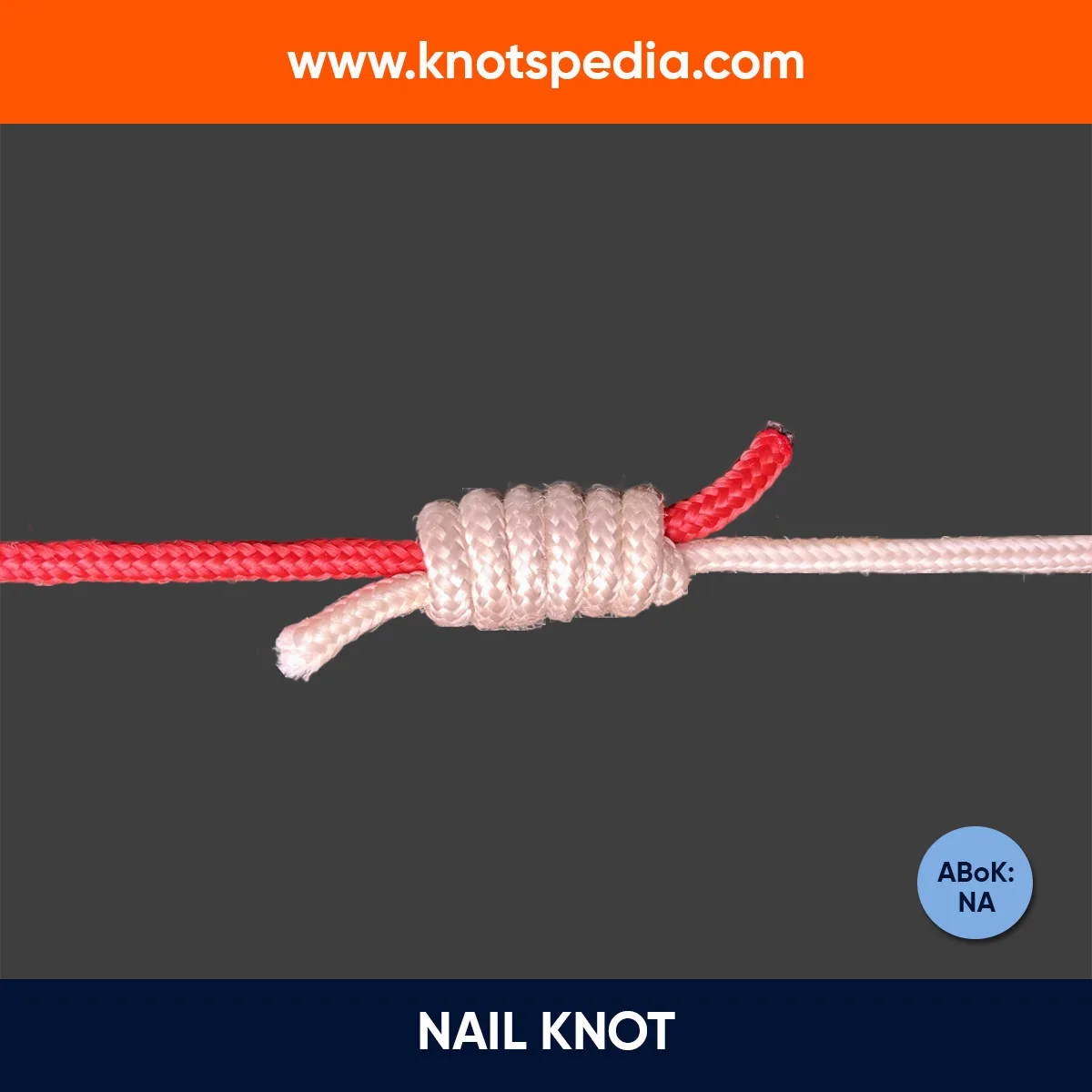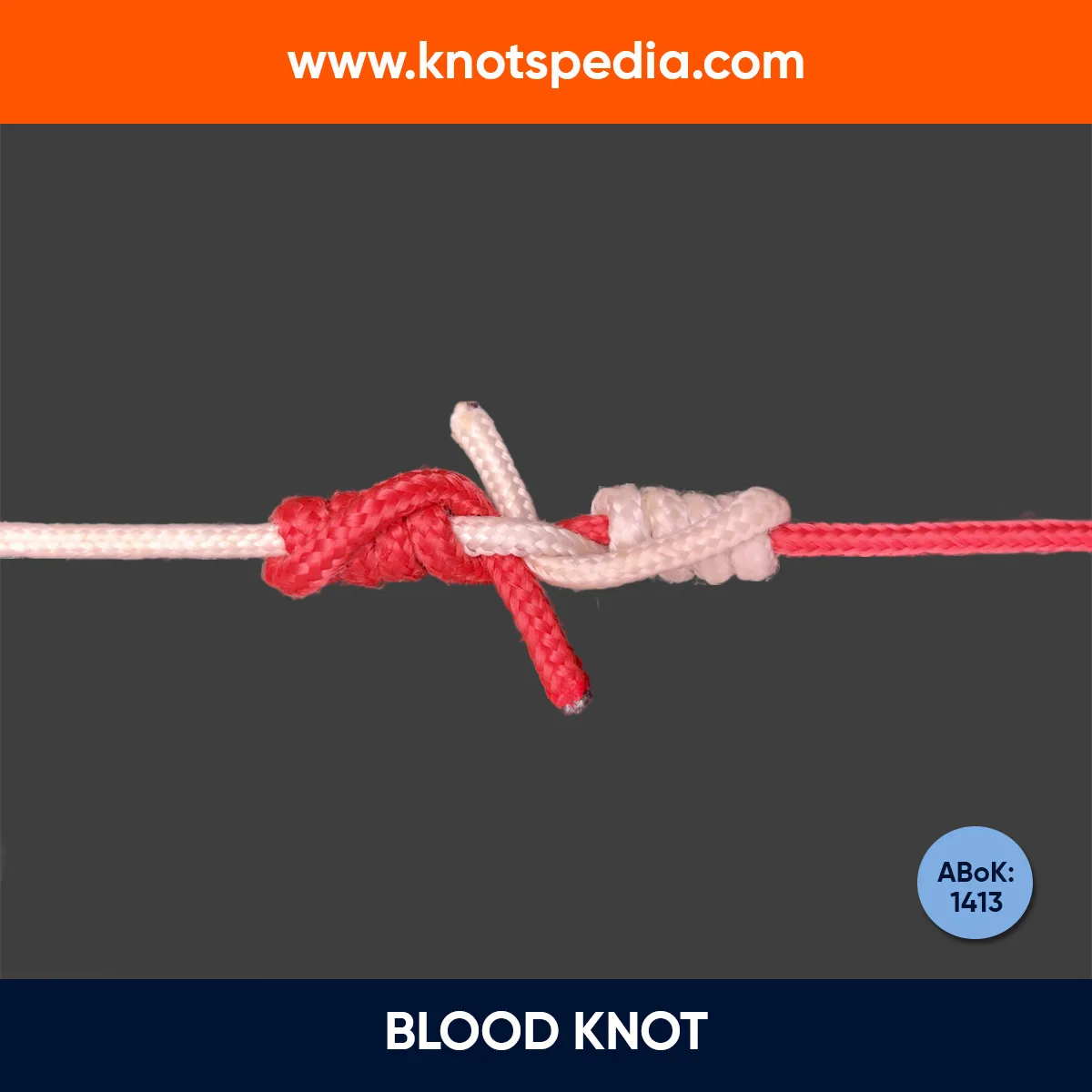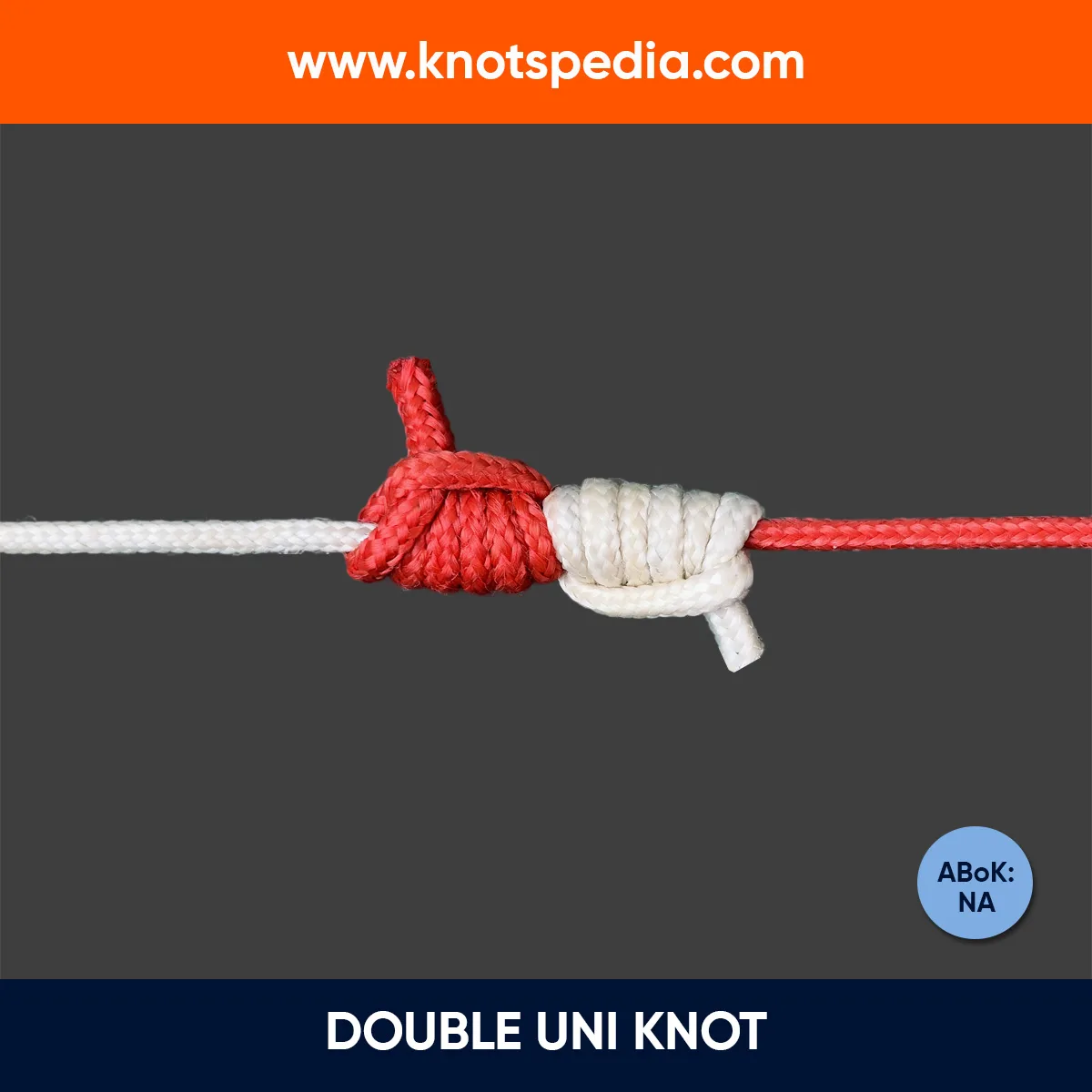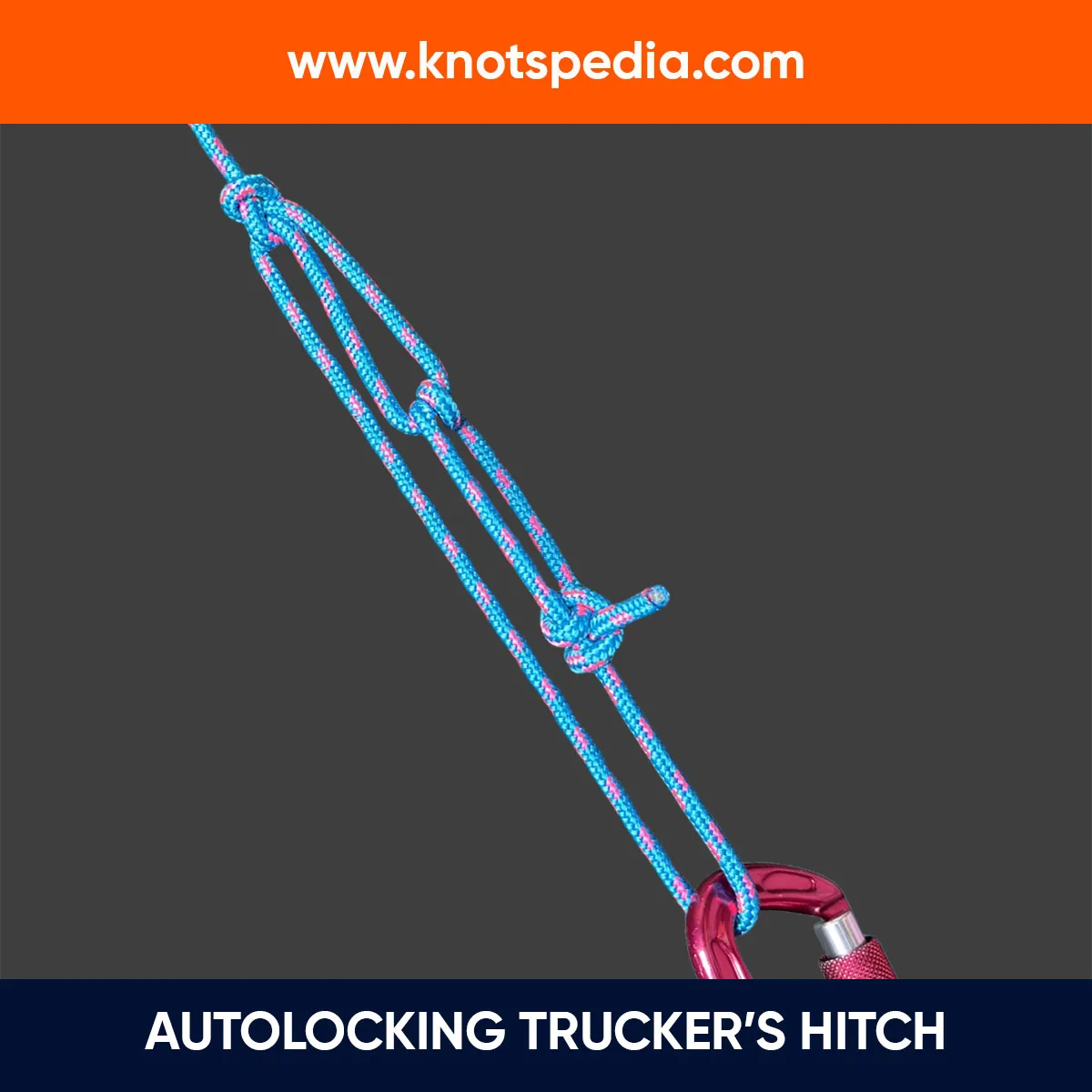The Highwayman’s Hitch is an exploding type quick-release knot used to tie loads temporarily that need to be released in a snap.
It can be tied in the middle of the rope, so you don’t need to pass the working end around the anchor or the rail.
And the best part?
It’s an easy knot to tie and super easy to untie.
Let’s get into it.
Highwayman’s Hitch Details
Type: Quick Release knot
Other Names: Bank Robber’s Knot, Fireman’s Hitch, Highwayman’s Cutaway, Getaway Hitch, Draw Hitch
ABoK Reference: NA
How to Tie Highwayman’s Hitch
- Make a first bight of rope and place it behind the support.
- Make a second bight on the standing end and pass it through the first one.
- Make a third bight on the working end and pass it through the second loop.
- Pull the standing part to tighten the knot.
To untie, just pull the working end of the rope and it will come undone.
Highwayman’s Hitch Step by Step
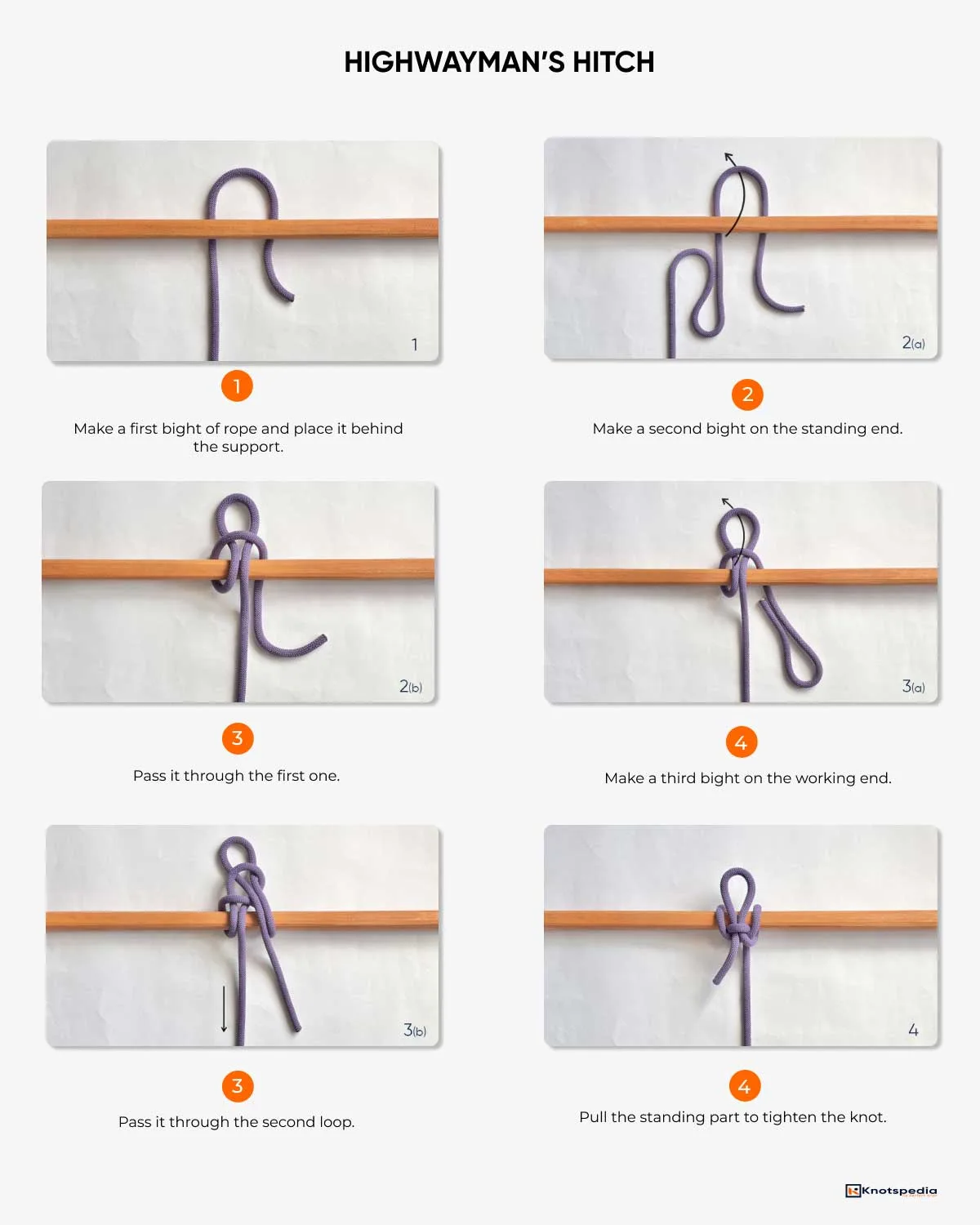
Pros & Cons
- Easy to tie.
- Can be untied under tension.
- Can be tied in the middle of the rope.
- May come loose by accident.
- May capsize when tied around a large object.
Applications and Uses
The Highwayman’s Hitch is used as a temporary mooring knot for boats. It’s easy to cast off without having to untie the knot by hand.
Kayakers use this knot to tie their boat to a dock.
It’s also used to tether animals, especially horses to the hitching post.
Weakness of the Highwayman’s Hitch
The Highwayman’s Hitch is a secure hitch, but it’s not perfect.
The holding power of the knot remains weak until you tighten and dress the knot.
If the pole or object is larger than the diameter of the rope, this knot could capsize.
The failure occurs when there is a load on the standing end—the second bight might slip through the first one.
It will undo the hitch if the third bight isn’t big enough. So, remember to keep the third loop a bit big.
Tumble Hitch vs Highwayman’s Hitch
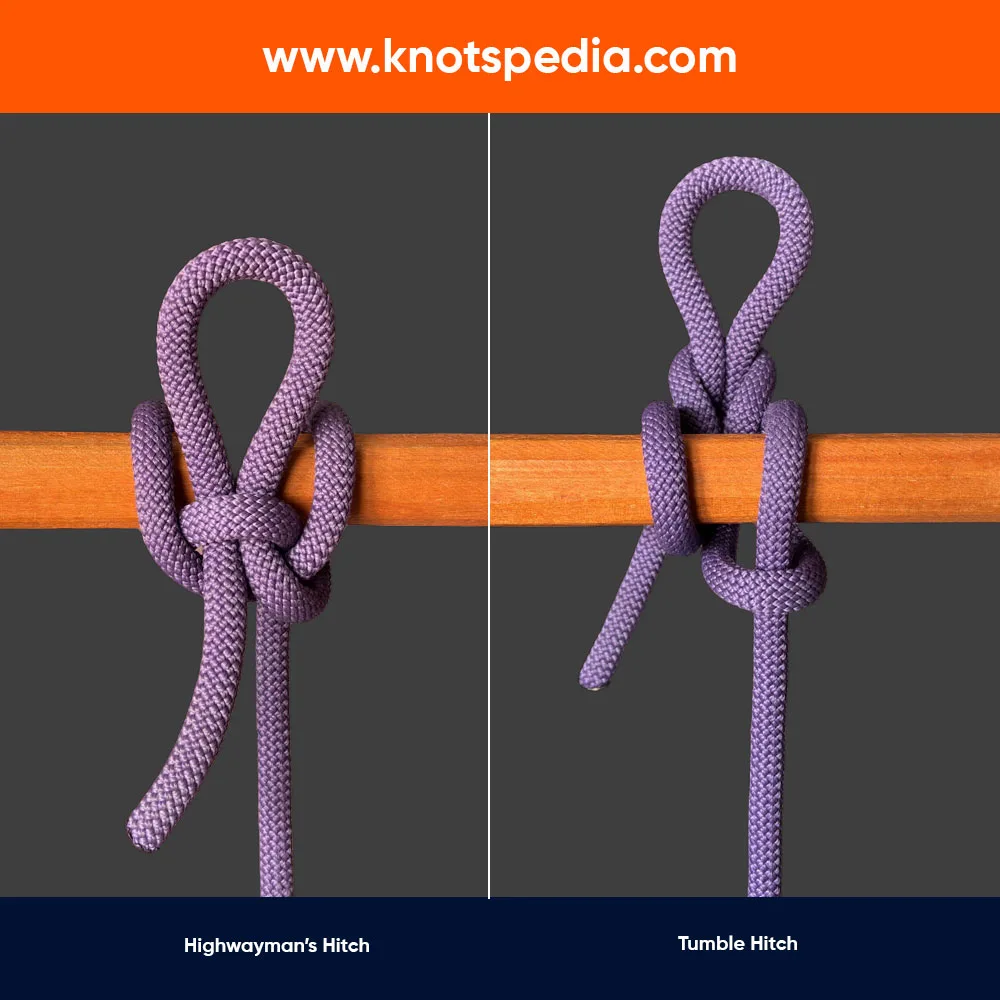
I have already mentioned the main problem with the Highwayman’s hitch is that the locking bight can collapse under tension.
If you need a more secure quick-release hitch, try the Tumble Hitch.
This was designed to solve the problem of the Highwayman’s Hitch.
It’s more stable than the Highwayman’s Hitch—the standing part is passive the whole time, and the locking is done by two bights of the working part going around the standing end and the object before locking into the final bight.
If you pull the standing end of the Tumble Hitch, it will stay in place and won’t come undone.
But this hitch can come loose when the line is not under tension.
Note: This is not a permanent hitch. If conditions are rough and there is lots of pulling and slack, it can easily come loose.
Fun Fact
Legend has it—the Highwayman’s Hitch was used by the highwaymen (the old-school bank robbers) for a fast getaway on horseback.
They would tie up their horses alongside the stagecoach using this hitch so they could bolt quickly.
But there is no solid proof for this fact. In fact, it has been rejected by Geoffrey Budworth who said:
“There is no evidence to substantiate the reputation of the highwayman’s hitch as a quick-getaway-knot for robbers on horseback.“
Related Knots
Siberian Hitch
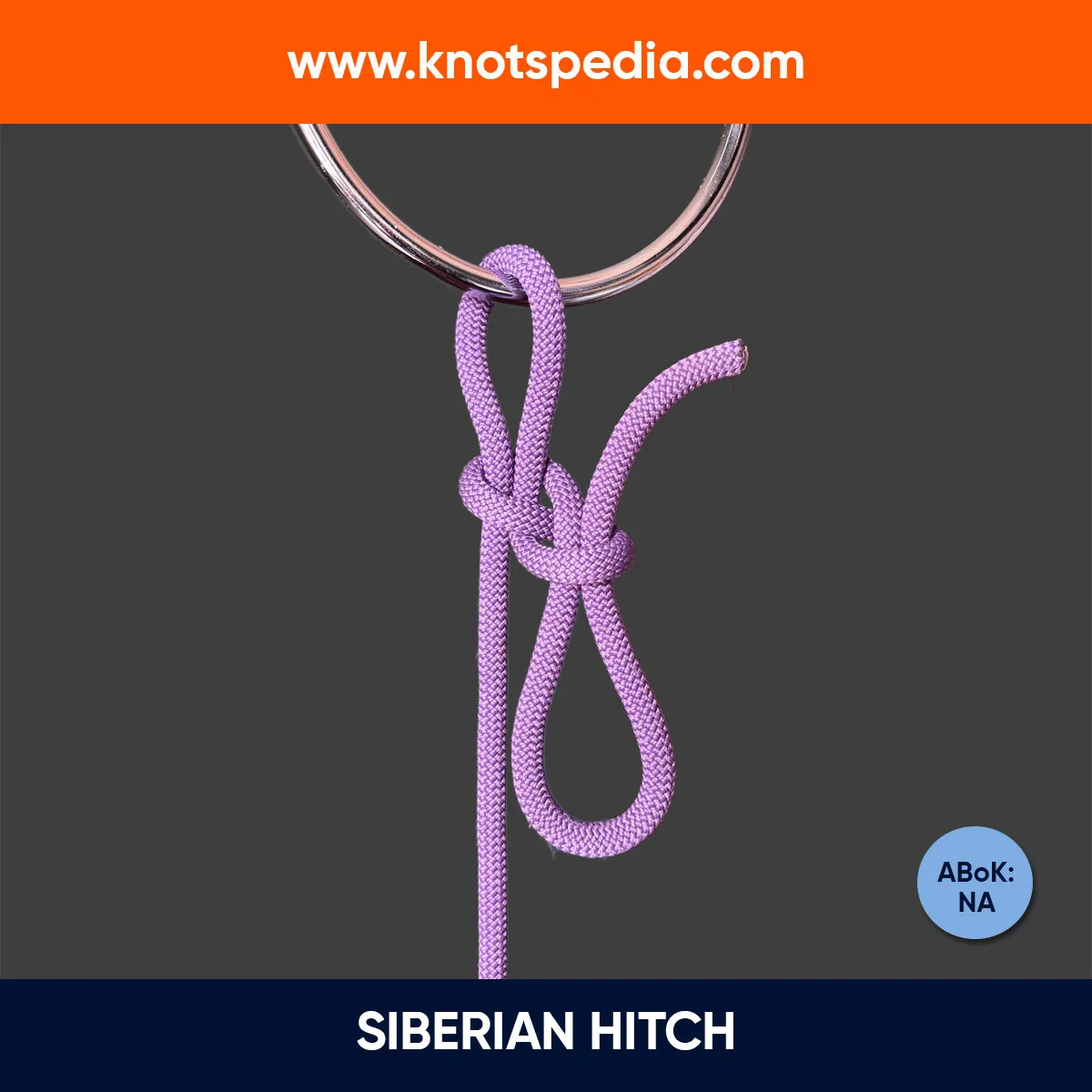
The Siberian Hitch is a quick release hitch that can be tied with gloves or mittens.
Only moderately secure, it is used to secure the tarp guylines and is not recommended for critical loads.
One of the best things about this knot is that it can be tied at some distance from the hitching object and then tightened against the post.
The Slipped Buntline Hitch is more secure than the Siberian Hitch when there is dynamic tension on the line.
Mooring Hitch

The Mooring Hitch serves the same purpose as the Highwayman’s Hitch.
It can be used to temporarily tie off a kayak or boat to a dock or tether animals.
This hitch is rarely used for mooring boats and is prone to jamming.
I hope you like the article. Don’t forget to share it with your family and friends!
